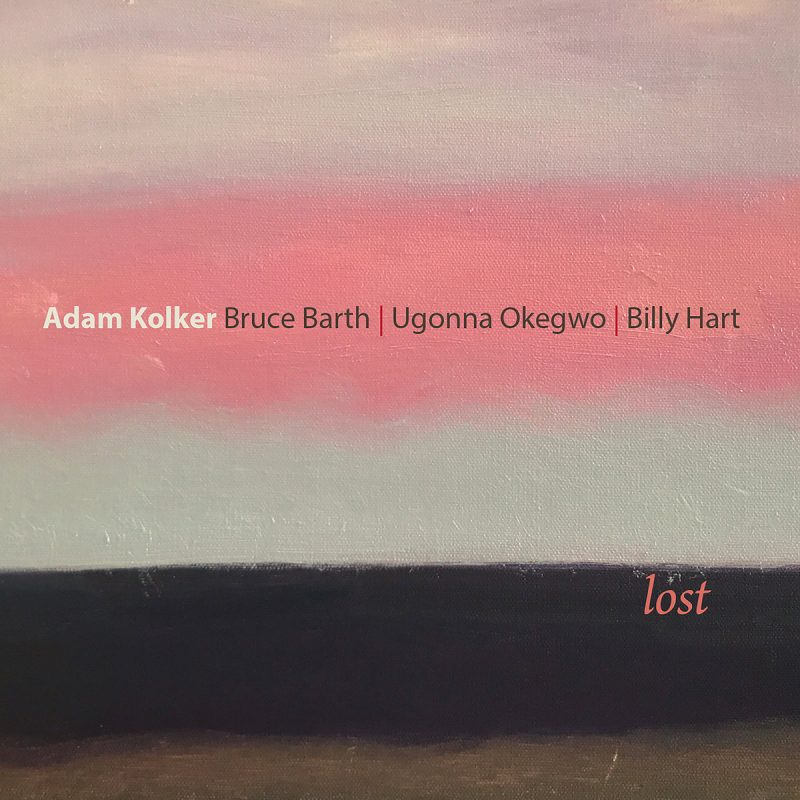
Review: Adam Kolker Lost (Sunnyside)
It’s been a longtime coming, a tenor saxophonist doing justice to Wayne Shorter in an album statement. 1
Kolker embraces Shorter’s almost-mystical genius, beautiful yet elliptical, invariably evident even in his verbal pronouncements.
He traffics in his subject’s tone, manner and visionary values. And he lives up to Shorter’s ideal of originality superseding conventional or inherited aesthetics.
Yes, Coltrane’s astringent tone and passion dwell within Shorter and, by extension, Kolker. Yet Shorter made his own art as compelling and sublime as any preceding jazz. He did this partly by employing shadow and indirection, shapely asymmetry, and by allowing the fissures of ambiguity to open fresh roads to possibility and new definitions of beauty and truth. At times, Shorter can sound as confessional as he does otherworldly.

Adam Kolker, Courtesy Jazz Times
Kolker has learned well. There’s a certain bite to his well-honed tone. So the Lost album opens with ingenious obliquity, with not a Shorter piece, but Gil Evans’ “The Time of the Barracudas,” originally an orchestral vehicle for Shorter’s tenor.
Both Shorter tunes interpreted, “Lost” and “Dance Cadaverous,” are as disquieting as they are strangely engaging. The album’s chosen title, “Lost,” feels wholly apt, as a tribute not to the man himself but to his long, winding road of quest, or The Way, a Buddhist concept of rather selfless enlightenment, long-embraced by Shorter. 2
(On the other hand, incorporating Shorter’s name into the title would’ve likely helped market the album to its intended audience.)
Though first conceived as an album of Shorter tunes, Kolker offers two of his own beguiling originals, which also betray formal qualities of Monk and Steve Lacy. Kolker also gives two standards, by Jimmy Van Husen and Bronislaw Kaper, Shorter-like re-imaginings.
Kolker has mastered for himself Shorter’s limpid aura of expressive intimacy, seeming to be whispering to you, the lone listener, in superbly burnished tones when he plays his saxophonists. On soprano, Kolker may have more restrained mastery than his elder’s model.
So, this album is far from musical hagiography, or the convention of a complete dedication album of an honoree’s repertoire.
A superb accompanying trio — pianist Bruce Barth, bassist Ugonna Okegwo and drummer Billy Hart — buoy the music like seamen expertly managing sails in tricky crosswinds. Shorter’s compositions and style are often as oddly tilted in the time/space continuum as they are nuanced.
If not quite a transformative work, Lost sets sail for a distant shore and gives us fresh lenses on Shorter’s still-too-little understood legacy. That Kolker accomplished an historical kind of perspective before Shorter’s passing testifies to this achievement.
___
1. To date, the strongest acknowledgement of Shorter’s legacy as album statements have come arguably from pianists, as in the 1983 piano-duo album Shorter by Two, by Kirk Lightsey and Harold Danko. This may partly be due to Shorter’s own comparatively long career, always exemplifying the reach beyond, rather than glorifying the past.
Rickey Ford’s Shorter Ideas is also a worthy covering of Shorter’s compositions.
2 Shorter originally recorded “Lost” on his 1965 Blue Note album The Soothsayer. “Dance Cadaverous” is from Shorter’s 1964 Blue Note masterpiece Speak No Evil.

